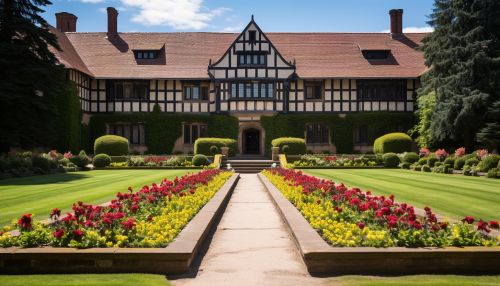Potsdam Agreement
Background
The Potsdam Agreement was a significant historical event that marked the end of World War II. It was a series of negotiations between the three major Allied powers: the United States, the United Kingdom, and the Soviet Union. These negotiations took place in the city of Potsdam, Germany, from July 17 to August 2, 1945.


The Participants
The three main participants in the Potsdam Agreement were the leaders of the Allied powers: President Harry S. Truman of the United States, Prime Minister Winston Churchill (and later Clement Attlee) of the United Kingdom, and General Secretary Joseph Stalin of the Soviet Union. These leaders and their respective delegations met at the Cecilienhof Palace in Potsdam, a city located near Berlin.
The Negotiations
The negotiations at Potsdam were complex and multifaceted. The leaders of the Allied powers sought to establish a framework for post-war order, peace treaty issues, and countering the effects of the war. The discussions revolved around several key issues, including the administration of Germany, the demarcation of the boundaries of Poland, the reparations to be paid by Germany, and the establishment of the Council of Foreign Ministers.
The Administration of Germany
One of the primary objectives of the Potsdam Agreement was to establish a system for the administration of Germany following the end of World War II. The Allied powers agreed to divide Germany and the city of Berlin into four occupation zones. Each zone was to be administered by one of the four Allied powers: the United States, the United Kingdom, the Soviet Union, and France.
The Demarcation of the Boundaries of Poland
The Potsdam Agreement also addressed the issue of Poland's boundaries. The Allied powers recognized the need to compensate Poland for the significant territorial losses it had suffered during the war. As a result, they agreed to move Poland's western boundary to the Oder-Neisse line. This decision resulted in significant population transfers, as millions of Germans living in what was now Polish territory were expelled.
The Reparations to be Paid by Germany
The issue of reparations was a contentious one during the Potsdam negotiations. The Soviet Union, having suffered immense losses during the war, demanded substantial reparations from Germany. The United States and the United Kingdom, however, were wary of repeating the mistakes of the Treaty of Versailles, which had imposed heavy reparations on Germany after World War I and had contributed to the rise of Adolf Hitler. The Potsdam Agreement ultimately stipulated that each occupying power was to take reparations from its own occupation zone.
The Establishment of the Council of Foreign Ministers
The Potsdam Agreement established the Council of Foreign Ministers, which was responsible for preparing peace treaties with Italy, Romania, Bulgaria, Hungary, and Finland. The council was composed of the foreign ministers of the United States, the United Kingdom, the Soviet Union, and France.
The Aftermath
The Potsdam Agreement had far-reaching effects on the post-war world. It laid the groundwork for the division of Germany, which would become a major flashpoint during the Cold War. The agreement also set the stage for the large-scale population transfers that would take place in Eastern Europe, as well as the establishment of the Council of Foreign Ministers, which played a significant role in shaping the post-war international order.
